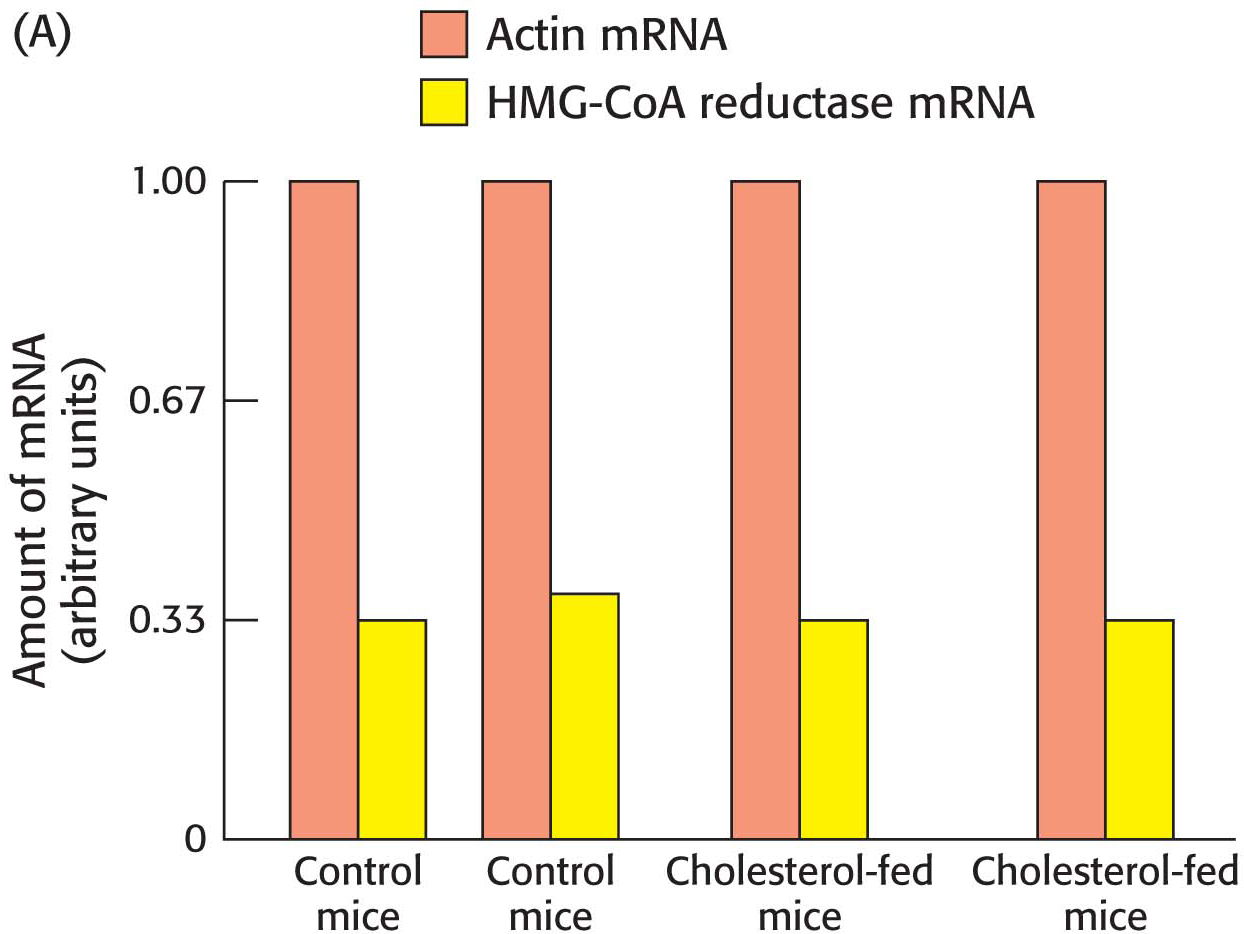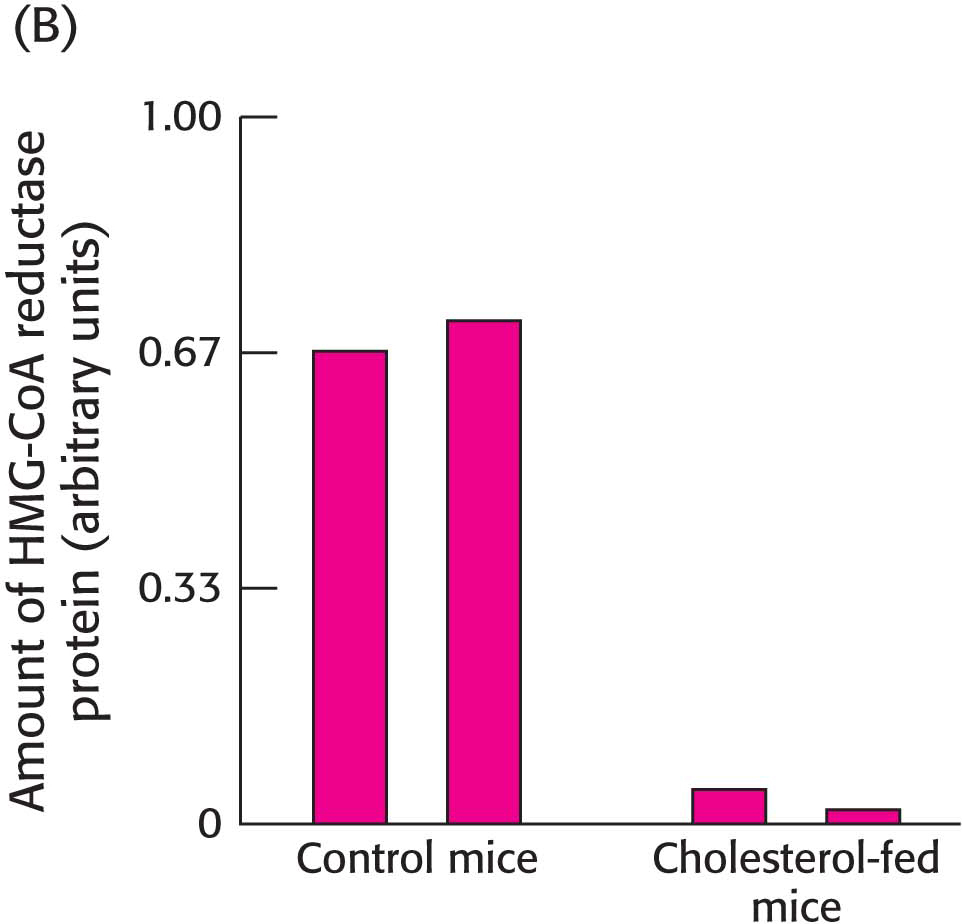PROBLEMS
Question 29.1
1. Making fat. Write a balanced equation for the synthesis of a triacylglycerol, starting from glycerol and fatty acids. ✓ 5
Question 29.2
2. Making a phospholipid. Write a balanced equation for the synthesis of phosphatidylserine by the de novo pathway, starting from serine, glycerol, and fatty acids. ✓ 5
Question 29.3
3. Needed supplies. How is the glycerol 3-
Question 29.4
4. ATP needs. How many high-
Question 29.5
5. Identifying differences. Differentiate among sphingomyelin, a cerebroside, and a ganglioside. ✓ 5
Question 29.6
6. Like Wilbur and Orville. Match each term with its description. ✓ 5
Phosphatidate Triacylglycerol Phospholipid Sphingolipid Cerebroside Ganglioside Cholesterol Mevalonate Lipoprotein particle Steroid hormone | Ceramide with either glucose or galactose attached. Precursor to both phospholipids and triacylglycerols Transports cholesterol and lipids Glycerol- Product of the committed step in cholesterol synthesis Formed from ceramide by the attachment of phosphocholine Storage form of fatty acids Derived from cholesterol Ceramide with multiple carbohydrates attached Squalene is a precursor to this molecule |
Question 29.7
7. Activated donors. What is the activated reactant in each of the following biosyntheses? ✓ 5
(a) Phosphatidylinositol from inositol
(b) Phosphatidylethanolamine from ethanolamine
(c) Ceramide from sphingosine
(d) Sphingomyelin from ceramide
(e) Cerebroside from ceramide
(f) Farnesyl pyrophosphate from geranyl pyrophosphate
Question 29.8
8. Let’s count the ways. There may be 50 ways to leave your lover, but, in principle, there are only two ways to make a glycerol-
Question 29.9
9. The Decider. What enzyme plays the key role in the regulation of lipid synthesis, and how is the regulation manifested? ✓ 5
Question 29.10
10. No DAG, no TAG. What would be the effect of a mutation that decreased the activity of phosphatidic acid phosphatase? ✓ 5
Question 29.11
11. Turn 10 around. What would be the effect of a mutation that increased the activity of phosphatidic acid phosphatase? ✓ 5
Question 29.12
12. The Law of Three Stages. What are the three stages required for the synthesis of cholesterol? ✓ 6
Question 29.13
13. Telltale labels. What is the distribution of isotopic labeling in cholesterol synthesized from each of the following precursors? ✓ 6
(a) Mevalonate labeled with 14C in its carboxyl carbon atom
(b) Malonyl CoA labeled with 14C in its carboxyl carbon atom
Question 29.14
14. Too much, too soon. What is familial hypercholesterolemia, and what are its causes? ✓ 6
Question 29.15
15. Many regulations to follow. Outline the mechanisms of the regulation of cholesterol biosynthesis. ✓ 6
Question 29.16
16. A good thing. What are statins? What is their pharmacological function? ✓ 6
Question 29.17
17. Too much of a good thing. Would the development of a “super statin” that inhibited all HMG-
Question 29.18
18. Controlling agents. What are the five major classes of steroid hormones?
Question 29.19
19. Developmental catastrophe. Propecia (finasteride) is a synthetic steroid that functions as a competitive and specific inhibitor of 5 α-reductase, the enzyme responsible for the synthesis of dihydrotestosterone from testosterone.
Propecia is now widely used to retard the development of male pattern baldness. Pregnant women are advised to avoid even handling this drug. Why is it vitally important that pregnant women avoid contact with Propecia?
Question 29.20
20. Breakfast conversation. You and a friend are eating breakfast together. While eating, your friend is reading the back of her cereal box and comes across the following statement: “Cholesterol plays beneficial roles in your body, making cells, hormones, and tissues.” Knowing that you are taking biochemistry, she asks if the statement makes sense. What do you reply? ✓ 6
Question 29.21
21. Let the sun shine in. At a biochemical level, vitamin D functions like a steroid hormone. Therefore, it is sometimes referred to as an honorary steroid. Why is vitamin D not an actual steroid?
Question 29.22
22. A means of entry. Describe the process of receptor-
Question 29.23
23. Personalized medicine. The cytochrome P450 system metabolizes many medicinally useful drugs. Although all human beings have the same number of P450 genes, individual polymorphisms exist that alter the specificity and efficiency of the proteins encoded by the genes. How could knowledge of individual polymorphisms be useful clinically?
Question 29.24
24. Honeybee crisis. In 2006, honeybee colonies suddenly and unexplainably died off throughout the United States. The die-
Chapter Integration Problems
Question 29.25
25. Hold on tight or you might be thrown to the cytoplasm. Many proteins are modified by the covalent attachment of a farnesyl (C15) or a geranylgeranyl (C20) unit to the carboxyl-
Question 29.26
26. Similarities. Compare the role of CTP in phosphoglyceride synthesis with the role of UTP in glycogen synthesis.
Question 29.27
27. ATP requirements. Explain how cholesterol synthesis depends on the activity of ATP-
Question 29.28
28. Fork in the road. 3-
Question 29.29
29. Drug resistance. Dichlorodiphenyltrichloroethane (DDT) is a potent insecticide rarely used today because of its effects on other forms of life. In insects, DDT disrupts sodium channel function and leads to eventual death. Mosquitos have developed resistance to DDT and other insecticides that function in a similar fashion. Suggest two means by which DDT resistance might develop.
Data Interpretation Problem
Question 29.30
30. Cholesterol feeding. Mice were divided into four groups, two of which were fed a normal diet and two of which were fed a cholesterol-
(a) What is the effect of cholesterol feeding on the amount of HMG-
(b) What is the purpose of also isolating the mRNA for the protein actin, which is not under the control of the sterol response element?
HMG-
(c) What is the effect of the cholesterol diet on the amount of HMG-
(d) Why is this result surprising in light of the results in graph A?
(e) Suggest possible explanations for the results shown in graph B. ✓ 6
Challenge Problems
Question 29.31
31. Familial hypercholesterolemia. Several classes of LDL-
Question 29.32
32. Inspiration for drug design. Some actions of androgens are mediated by dihydrotestosterone, which is formed by the reduction of testosterone. This finishing touch is catalyzed by an NADPH-
Question 29.33
33. Life-
Question 29.34
34. Removal of odorants. Many odorant molecules are highly hydrophobic and concentrate within the olfactory epithelium. They would give a persistent signal independent of their concentration in the environment if they were not rapidly modified. Propose a mechanism for converting hydrophobic odorants into water-
Selected Readings for this chapter can be found online at www.whfreeman.com/